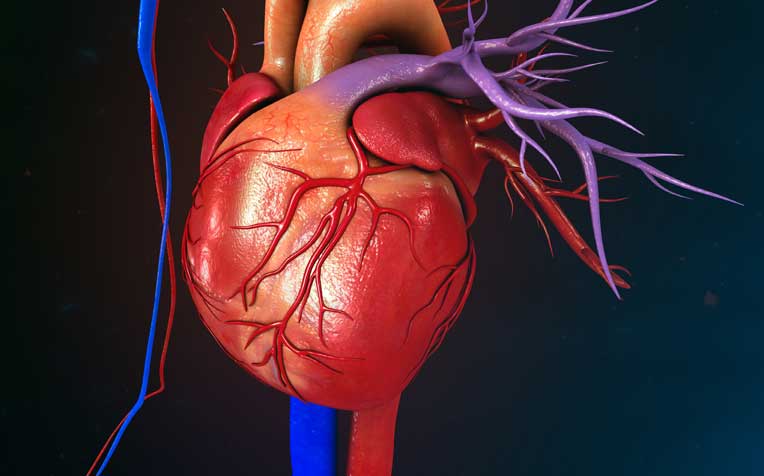
Aortic dissection occurs when a tear develops in the inner layer of the aorta, the largest artery branching from the heart.
Aortic dissection may be rare, but it is a potentially fatal blood vessel condition
If you experience a sudden onset of sharp ‘tearing’ chest pain radiating to the back, fainting or even difficulty breathing, you should seek emergency medical help as it could be a sign of a rare but potentially fatal blood vessel condition called aortic dissection.
Emerging from the heart, the aorta is the body’s largest artery. The wall of the aorta comprises an inner, middle and outer layer. It’s normally thick and elastic enough to withstand the pressure of oxygenated blood flowing from the heart to the different parts of the body.
Aortic dissection occurs when a tear in the inner layer of the aorta wall lets blood surge into the wall’s middle layer, forcibly separating or “dissecting” these two layers of the aortic wall.
Aortic dissection becomes life-threatening when the force of blood ruptures the outer layer of the aortic wall and causes bleeding.
“The prevalence in the general population is about 2.5 to 5 cases per 100,000 people. Locally, the National Heart Centre Singapore (NHCS) treats about 15-20 cases each year,” says Assistant Professor Victor Chao, Senior Consultant from the Department of Cardiothoracic Surgery at NHCS, a member of the SingHealth group.
Risk factors for aortic dissection
Uncontrolled high blood pressure is the major risk factor for aortic dissection. If the force of the blood pressing against the aortic wall is too high, it can lead to tearing of the wall. Certain congenital diseases, such as Marfan’s syndrome, can cause connective tissues in the aortic wall to stretch and weaken, making them susceptible to tearing and rupture. Bicuspid aortic valve, where the aortic valve has two leaflets instead of the usual three, is another congenital disease that can increase the risk of aortic dissection. People with aortic aneurysm (bulging aorta) and atherosclerosis (hardening of arteries) also have a higher risk of suffering from aortic dissection.
Symptoms of aortic dissection
The patient typically presents complaining of sudden-onset, excruciating (‘tearing in nature’) chest pains radiating through to the back.
Other associated symptoms occur as a consequence of reduced blood flow to various parts of the body, or due to the pressure exerted on vital organs by an enlarging blood clot:
- Shortness of breath
- Excessive sweating, pale and clammy skin
- Rapid or weak pulse
- Fainting or dizziness
- Difficulty speaking, weakness on one side of the body and blurred vision (similar to stroke symptoms)
Diagnosing aortic dissection
Doctors diagnose aortic dissection based on a variety of tests, including chest X-rays, computed tomography scan (CT scan) and magnetic resonance imaging scan (MRI scan). But if a patient complains of sudden sharp and severe pain in the chest and back, aortic dissection should be suspected, especially if the person has a history of chronic high blood pressure.
Treatment for aortic dissection
The location of the tear in the aortic wall and risk of aortic rupture will determine whether doctors will treat aortic dissection with surgery or medications.
Emergency surgery is required when the tear occurs in the ascending aorta or the portion of the aorta closest to the heart (type A aortic dissection). The risk of death increases by 1 per cent for each hour that passes after the aorta has torn and not been treated. Within 48 hours, 50 per cent of the patients will die. The goal of surgery is to prevent death from exsanguination from frank rupture of the aorta, stroke, heart attack and severely leaking heart valve.
In open heart surgery, surgeons will replace the damaged portion of the aorta with a synthetic tube graft. The adjacent structures of the heart may also need to be treated if the condition affected the:
- Aortic valve and
- Coronary arteries
The former can be preserved by repair or replaced with prosthetic valves, whilst the latter can be preserved by reimplanting them onto the graft or through additional coronary bypass surgery.
Usually, oral or intravenous medications will be recommended instead of surgery in case of tears involving the descending aorta (type B aortic dissection). The goal is to aggressively reduce and control high blood pressure. Endovascular stent grafting - a minimally invasive surgery - may be recommended for suitable patients.
Even after surgery, aortic dissection patients will need to continue taking oral medications to control their heart rate and reduce their high blood pressure.
“This age-old condition is a dreaded diagnosis. One should ensure adequate control of high blood pressure and seek help early when symptoms arise,” says Asst Prof Chao.
Read on to find out the diagnosis and treatment options for aortic dissection.
Ref: L20
Contributed by
















 Get it on Google Play
Get it on Google Play